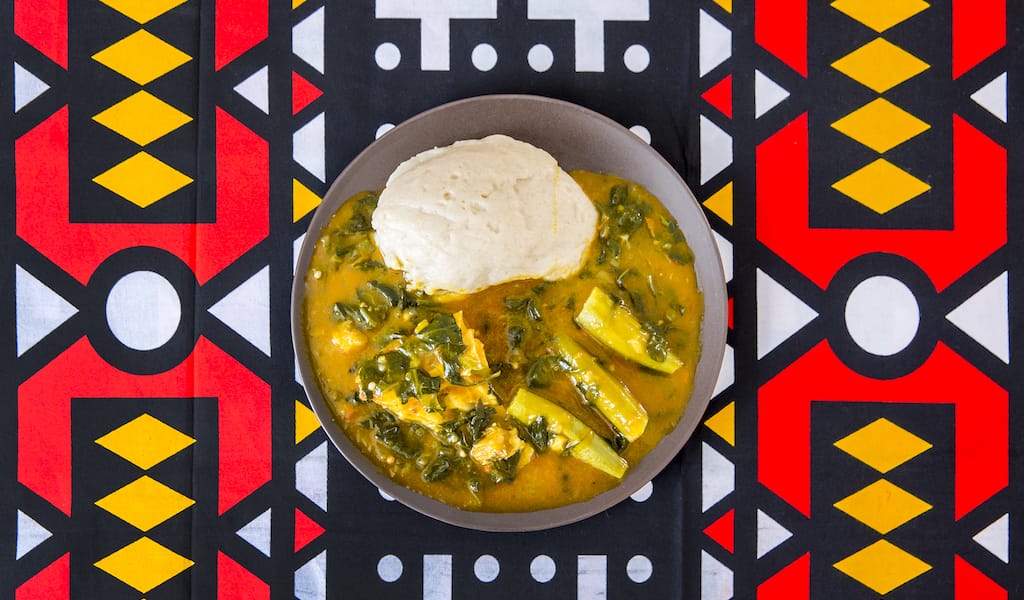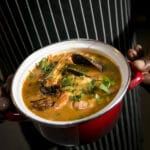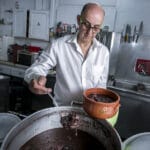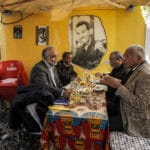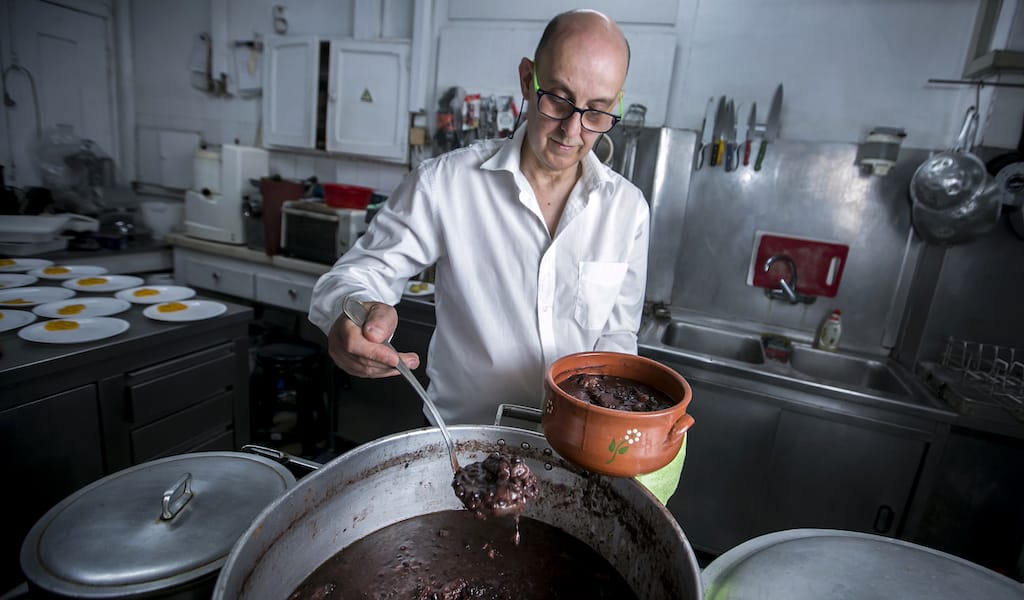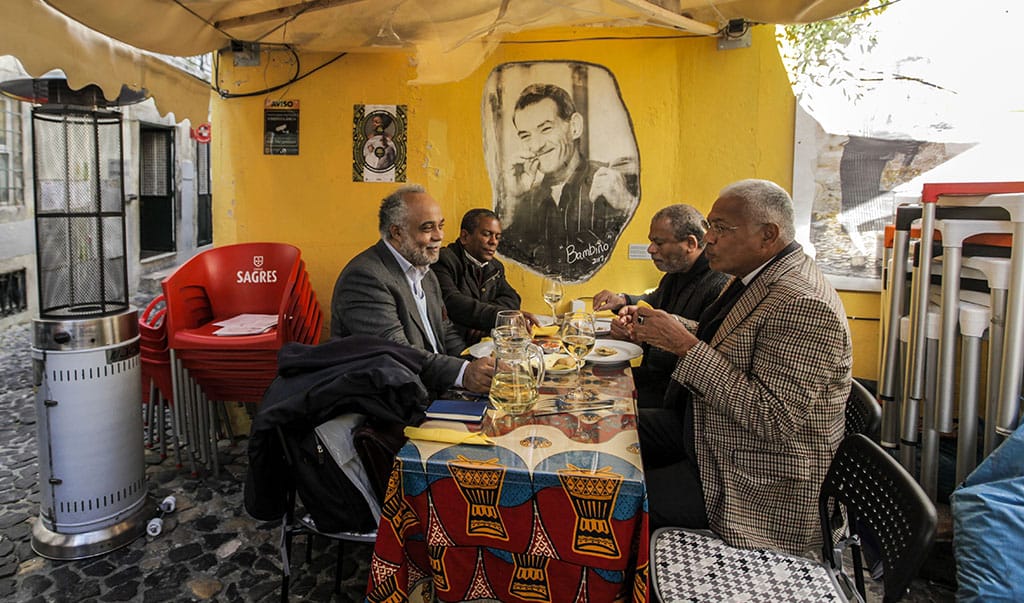Editor’s Note: Though integral elements of Lisbon life, communities from Portugal’s former colonies can sometimes be an invisible presence in their adopted land, pushed out to the periphery. With our “Post-Colonial Lisbon” series, CB hopes to bring these communities back into the center, looking at their cuisine, history and cultural life. In this installment, we dive into Lisbon’s Angolan community.
Those normally finding themselves craving Angolan flavors in central Lisbon head straight to Mouraria, the medieval downtown neighborhood that has experienced a conceptual conversion of its peripheral status into a landmark of cultural and culinary diversity. Despite it being the area with the highest density of Angolans in Lisbon’s city center, Angolan restaurants open and close at a rapid rate, with now-shuttered CB favorites Palanca Gigante and Shilabo’s falling prey to this trend. In the beginning, these restaurants were only popular among the Angolan community, but nowadays, due to the rehabilitation of the neighborhood, a new clientele is discovering them.
Now that we can’t get the country’s iconic national dish, muamba, at Shilabo’s or Palanca Gigante, we head to Rato instead for a taste of Angola.

Casa de Angola
A three-floor cultural association in Rato, the neighborhood just north of sleek Principe Real, has for decades focused primarily on bridging Angolan and Portuguese cultures. Created in 1971 by Angolan students, it launched without state support and is still subject to some intrigue. “Some say that this was an Angolan masonry house because of some indicative symbols on the building,” says chef Paulo Soares, who moved to Lisbon in 1981.
In 1974, the house was destroyed by a bombing, an act that Soares believes was carried out due to either insanity or racism. After a period of abandonment, in which it was used as a squat by African families, the building was reconstructed with the help of the Angolan government.

Nowadays, all three floors are dedicated to differing cultural expressions. At ground level there’s a charming restaurant with a few tables draped in colorful kanga fabric, and the walls are decorated with maps, paintings and photos of Luanda.
Under Soares’s eye, the kitchen reproduces the best of Angola, home to a gastronomy that depends on many grains and starches (especially sorghum, corn, beans and yam), fruit (particularly watermelon, baobab and tamarind), peanuts and palm oil, all cooked with techniques influenced by Mozambican, Brazilian and Portuguese methods.
A choice order here is the peito alto, a meat stew usually accompanied by okra and funge.

A kind of creamy polenta made mainly from cassava funge became a classic element of Angolan gastronomy as a result of colonization, after the dish was introduced to Africa by the Portuguese in the 16th century. This cheap and nourishing root, originally from Brazil, was used to feed people on slave-trading ships and was later, in the 18th century, successfully incorporated into the Angolan agricultural system.
Each table at Casa de Angola is stocked with another colonial-influenced products with Brazilian origins, Jindungo piripiri. Other items include farofa (toasted manioc flour) and the starter kitaba, a spicy peanut paste.
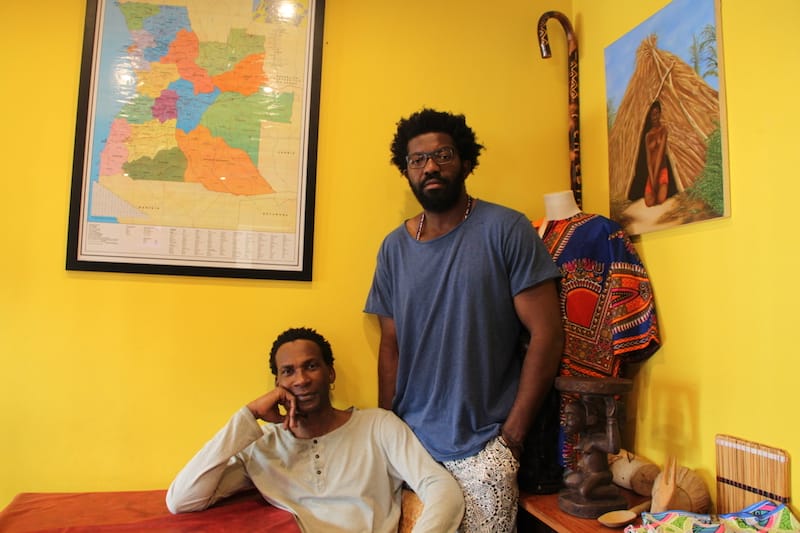
A rich cultural life resides on the other two floors, which house an auditorium, exhibition space, atelier and Kilombo, a non-profit venue related to Angola Today media. “Cinema, theater, music and poetry are often on the agenda,” say Miguel Sermão and Matamba Joaquím, two Lisbon-based Angolan actors involved in Casa de Angola’s cultural programming. “It has created a great legacy between Portugal and Angola.”
Read more about the Angolan community and history in Lisbon in the dropdown below.
Published on June 28, 2022
Go Deeper
- Learn more about the history of the Angolan community in Lisbon
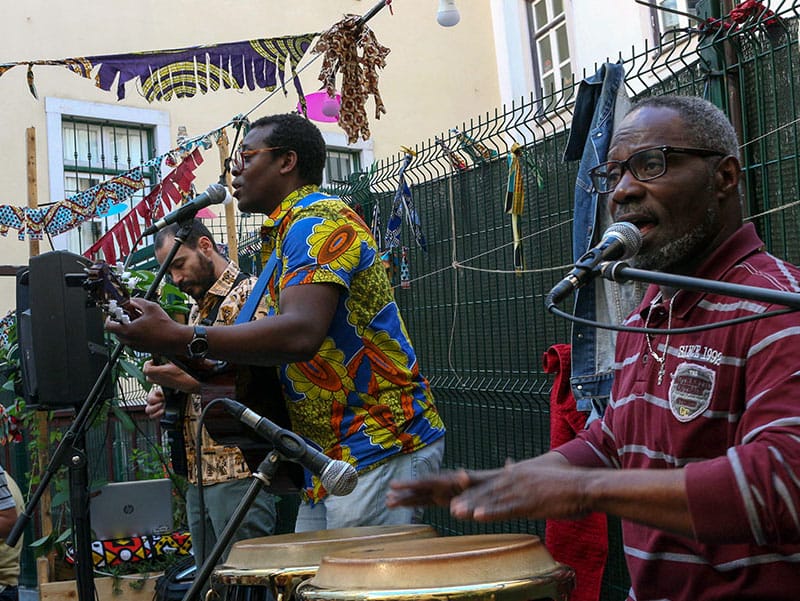
Although Angolans are not known to emigrate en masse like their continental counterparts, they do form the second largest African diaspora community in Lisbon. The seventh largest country in Africa, Angola has undergone considerable upheaval, which has contributed to this. Violent civil conflict began after the country gained independence from Portugal in 1975 and continued – with a few interruptions – until 2002. Caused by a power struggle between two former liberation movements influenced by the larger cold war, this conflict has caused half a million deaths, significant displacement and severe damage to national infrastructure, stoking a steadily burning atmosphere of social instability and insecurity.
Until 1970, Angolan migrants in Lisbon were mainly students who came to learn in the empire’s “metropolis,” and many of them obtained dual nationality later. After the Carnation Revolution, together with the massive flow of Luso-Angolanos (Portuguese descendants who were born or were permanent residents in Angola, known also as retornados), the capital received an influx of immigrants that peaked in the 1990s. These immigrants primarily found work in the construction industry, but these jobs started waning in the early 2000s.
Lisbon has around 12,500 registered Angolan residents, the majority between 40 and 64 years old. However, as is usual here, statistics don’t tell the whole story and excludes those naturalized as Portuguese, those with dual nationality and those without legal status.
Although the community is not homogeneous in terms of class and geographical distribution, the majority of Angolans and Angolan descendants is affected by territorial and social marginality. Despite the presence in Lisbon of a well-off cultural elite and an influx of wealthy investors from the former colony, the socio-economic conditions of Angolan families are in general poorer than the national average. Many of them live in the peripheral rings of the capital where social housing is concentrated, suffering inequalities in terms of economics, education, employment and social mobility, all of which are exacerbated by racial discrimination.
Related stories
June 28, 2022
LisbonEditor’s Note: Though integral elements of Lisbon life, communities from Portugal’s former colonies can sometimes be an invisible presence in their adopted land, pushed out to the periphery. With our “Postcolonial Lisbon” series, CB hopes to bring these communities back into the center, looking at their cuisine, history and cultural life. In this installment, we dive…
June 27, 2022
LisbonEditor’s Note: Though integral elements of Lisbon life, communities from Portugal’s former colonies can sometimes be an invisible presence in their adopted land, pushed out to the periphery. With our "Postcolonial Lisbon” series, CB hopes to bring these communities back into the center, looking at their cuisine, history and cultural life. In this installment, we…
June 27, 2022
LisbonEditor’s Note: Though integral elements of Lisbon life, communities from Portugal’s former colonies can sometimes be an invisible presence in their adopted land, pushed out to the periphery. With our “Postcolonial Lisbon” series, CB hopes to bring these communities back into the center, looking at their cuisine, history and cultural life. In this installment, we…







































